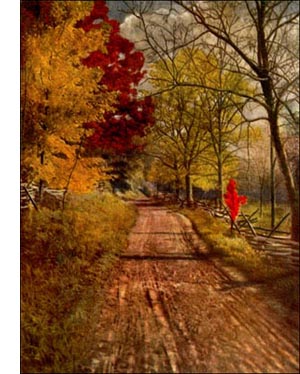Black Spruce Tree
 Black Spruce (Picea Mariana, B. S. & P.)-Pyramidal evergreen, with short, drooping branches, usually 30 to 40 feet high, occasionally 8o feet high. Twigs downy. Bark thin, scaly, brownish grey. Wood light, weak, soft, yellow. Buds brownish red, downy, ovate. Leaves blue-green, with pale bloom above, linear, sharp, stiff, 4 to 4 inch long, set around twig. Flowers cone-like, monoecious, solitary, axillary. Fruit oval cones, z to 1 1/2 inches long, pendant, persistent for many years; scales thin, entire. Preferred habitat, dry lowlands, rocky slopes and bogs. Distribution, Labrador to Alaska; south to Wisconsin, Pennsylvania and northern Virginia. Uses: Locally as lumber and fuel. Wood made into paper pulp. Resin used as chewing gum. Sap made into beer.
Black Spruce (Picea Mariana, B. S. & P.)-Pyramidal evergreen, with short, drooping branches, usually 30 to 40 feet high, occasionally 8o feet high. Twigs downy. Bark thin, scaly, brownish grey. Wood light, weak, soft, yellow. Buds brownish red, downy, ovate. Leaves blue-green, with pale bloom above, linear, sharp, stiff, 4 to 4 inch long, set around twig. Flowers cone-like, monoecious, solitary, axillary. Fruit oval cones, z to 1 1/2 inches long, pendant, persistent for many years; scales thin, entire. Preferred habitat, dry lowlands, rocky slopes and bogs. Distribution, Labrador to Alaska; south to Wisconsin, Pennsylvania and northern Virginia. Uses: Locally as lumber and fuel. Wood made into paper pulp. Resin used as chewing gum. Sap made into beer.The least of all spruce cones grow on the black spruce trees, and the tree is burdened with the empty husks of twenty or more crops before it lets the oldest ones drop. It is a peculiar habit, and gives the tree an unkempt, dingy appearance that the grey bark intensifies. The habit of the tree is ragged and uneven, and the foliage dull bluish grey. Altogether it is not to be wondered at that the black spruce is ignored by planters. The tree has always proved short lived in gardens.
The vast forests of this timber will be converted into paper. Wherever spruce timber grows to-day there are fortunes awaiting the owners. This wood that lumbermen reject exactly suits the pulp man's needs. Thousands of acres are consumed every year. Black as its name is, the wood is almost white, and the paper needs little or no bleaching.